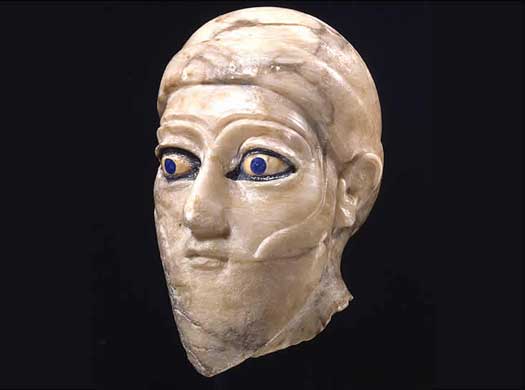
| CITY STATE OF ADAB City State of Adab :
The Sumerian city of Adab (modern Bismaya) was located between Telloh and Nippur, and had as its principal deity the goddess Ninhursag. Before the archaeological discovery of its remains it was only known from a brief mention in the introduction to the Hammurabi Code (written in circa 1760 BC in Babylon). The city was divided in two by a canal, with an island on which stood the temple of E-mach, with a ziggurat. Few of the texts discovered at Adab have been published, so little is known about it, but it dates to the prehistoric period and was abandoned relatively early, by no later than 2000 BC. For the rest of its existence it was ruled by whichever city state held pre-eminence in Sumer.
According to the Sumerian king list, Adab was host to a single dynasty consisting of one ruler who reigned for ninety years, taking the kingship from the Second Dynasty of Ur. This is the ninth entry on the list comprising king 59. Here, List 1 is primarily used, backed up by List 2.
c.2550 BC :
Mesilim of Kish restores the Temple of E-sar.
c.2550 BC :
Nin-Kisalsi : A vassal of Ur.
Me-Durba : Son. A vassal of Ur.
c.2350 BC :
Lugalannemundu / Lugal-Ane-mundu : Ruled for 90 years. 'King of the four quarters of the Universe.'
According to the king list, Lugalannemundu receives the kingship following the fall of the Second Dynasty at Ur. He is credited with extending Sumer's control to include territory from the Persian Gulf right up to the Mediterranean, bordering the Taurus mountains in the north, and the Zagros mountains in the east, subjecting the Gutians. Going even further, he confronts the king of the Marhashi, and leaves an inscription to record the event.
The empire dissolves upon Lugalannemundu's death and the kingship is taken to Mari.
The head of a ruler or governor of Adab (modern Bismaya) from the period 2050-2000 BC c.2300 BC :
Adab falls under the control of the Akkadian empire. It appears there is still a line of kings at Adab which is allowed to continue to rule, albeit with the lesser title of governor (ensi).
fl c.2300 BC :
Meskigal : A vassal of Agade.
c.2050 - 2000 BC :
The Ur III empire rules Adab, probably appointing governors to administer the city.
c.1760 BC :
Adab, which has been unimportant since the time of the Akkadian empire. receives its final mention in history as a satellite state of Hammurabi's Babylonian empire.
Source :
https://www.historyfiles.co.uk/ |
